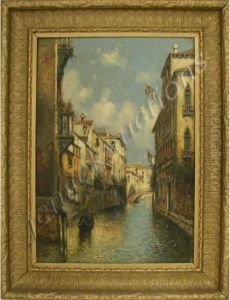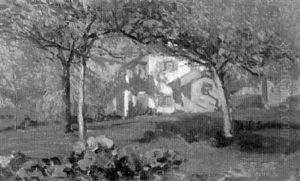Charles Rambert Paintings
Charles Rambert, born in 1870 in France, was a distinguished figure in the realm of French painting and printmaking during the late 19th and early 20th centuries. His artistic journey began at a young age, influenced by the rich cultural environment of France, which at the time was a global hub for artistic innovation and the birthplace of Impressionism. Rambert's work, however, diverged from the Impressionist focus on light and color to explore more traditional subjects with a modern sensibility, blending elements of realism with the emerging styles of his time.
After receiving formal training at the École des Beaux-Arts in Paris, Rambert devoted himself to mastering the art of landscape and portrait painting, exhibiting a keen interest in capturing the essence of his subjects with a delicate balance of realism and emotional depth. His landscapes, often inspired by the French countryside, reflect a serene and thoughtful exploration of nature, characterized by their detailed textures and nuanced color palettes. Meanwhile, his portraits reveal a profound understanding of human character and emotion, making him a sought-after portraitist among the Parisian elite.
Throughout his career, Charles Rambert remained dedicated to the traditional techniques of oil painting, while also experimenting with printmaking, which allowed him to reach a wider audience. His prints, much like his paintings, are noted for their precision and depth, showcasing his versatility as an artist. Despite the shifting trends in art during his lifetime, including the rise of modernist movements like Cubism and Fauvism, Rambert maintained a commitment to his unique artistic vision, which was rooted in a deep appreciation for the beauty of the natural world and the complexity of the human condition.
Rambert's contributions to French art were recognized with several awards and honors throughout his lifetime, and his works were exhibited in prestigious galleries and salons across Europe. Today, his paintings and prints are held in numerous public and private collections, testament to his enduring appeal and relevance in the history of art. Charles Rambert passed away in 1942, leaving behind a legacy that continues to inspire and captivate art lovers and collectors around the world.

